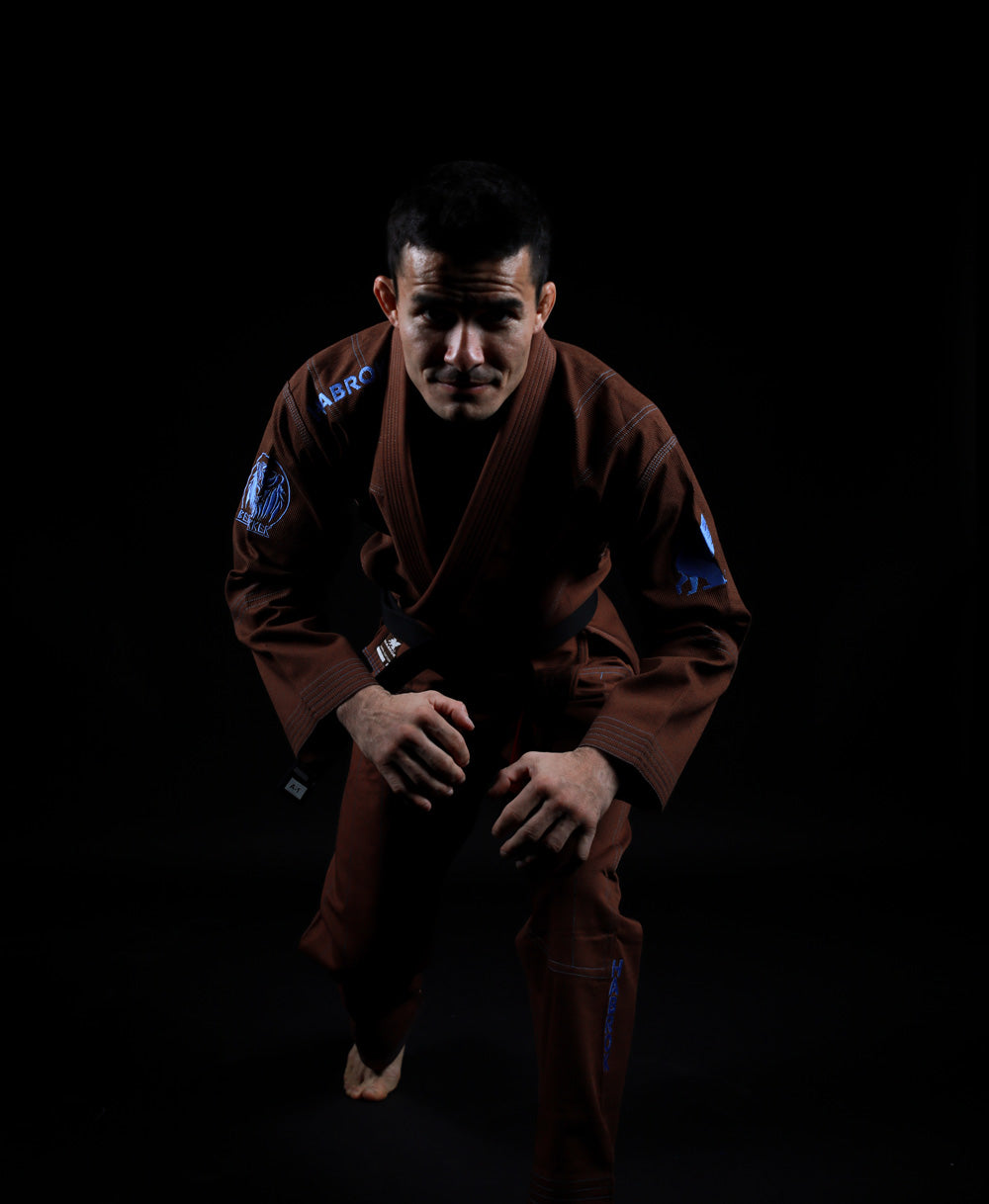Habrok Jiu Jitsu Gis
Habrok BJJ gi collection offers something for everyone. Whether you’re a new white belt or a tenured black belt, you’ll feel confident and comfortable wearing our gear. Our BJJ gis use cutting edge technology, delivering the best in terms of performance, longevity, value, and quality.
From ultra-light competition gis to exclusive gis which will stand out at any open mat, Habrok has a BJJ gi for any training situation! Our Jiu-Jitsu Gis are designed with a tailored fit that fuses unparalleled elegance with performance to deliver the ultimate experience for Brazilian Jiu-Jitsu.
When you’re picking out your next Brazilian Jiu Jitsu gi, know that Habrok offers fast, global shipping, pre-shrunk gis for a guaranteed fit, and a 30 day return policy.
[PRODUCT LIST]
Our Brazilian Jiu Jitsu Gi
When you’re just starting out your journey in Brazilian Jiu Jitsu the first big step you’ll need to take is to buy a BJJ Gi. This can feel like a tough decision as gis come in seemingly endless styles and colors. But you’ve got nothing to worry about - at Habrok we’ve got you covered and all of our gis are high quality and are guaranteed to last.
If you’ve got any questions about fit or style send us an email and we’ll be happy to help! Additionally, we’ve put together a list of our most frequently asked questions below.
What is a BJJ Gi?
BJJ gis are descended from the traditional Japanese kimono. BJJ is an offshoot of Judo which branched off during the early 1900s. Judo, along with many other traditional Japanese martial arts, was practiced while wearing the traditional garment of the time: a kimono. Over time the kimono was modified for use in grappling to make it more durable and comfortable for the practitioners.
Judo gis have changed very little since Jigoro Kano adopted them in the late 1800s, and more closely resemble the kimonos that were worn by the samurai centuries ago. The Brazilian Jiu Jitsu gi, however, has evolved and now differs significantly from Judo gis. BJJ gis have shorter sleeves with narrower openings, better suited to the ground grappling of BJJ than to the standing throw-based sport of Judo.
Originally Judo and Jiu Jitsu gis were only available in white, with Judo adopting blue as a secondary color to help distinguish athletes from one another in competition. Brazilian Jiu Jitsu followed Judo’s lead and the dominant colors of BJJ gis were white, blue, and black. In fact, some gym affiliations still require their students to wear white gis.
As BJJ has gained popularity around the world, a wider color palette has become available and it has become common for athletes to include team and sponsor patches on their gi. With the advent of sublimation technology, full color liners with elaborate designs have been made possible, allowing BJJ practitioners nearly unlimited freedom to express themselves.
Habrok Jiu Jitsu Gi FAQs
What should I look for when picking a good BJJ gi?
BJJ gis are an investment, and a well-made gi should easily last for many years. Look for gis which use high-quality cotton fabric and include reinforced stitching. A good BJJ gi may be lightweight and designed for travel, or made out of thicker material to make it more challenging for your opponents to get their grips - the difference here is one of preference.
Does the color of my BJJ gi signify anything? Can I wear any color BJJ gi I want?
The color of BJJ gis is purely an expression of style. Some gyms require their students to wear a white gi, while others only permit white, blue, or black gis - however this is an old-school mentality that is becoming less common.
If you would like to compete, certain competitions have gi color requirements. Most notably, the IBJJF (one of the most prestigious BJJ tournaments) requires its competitors wear white, blue, or black gis.
Will my Habrok BJJ gi shrink?
No, your Habrok BJJ gi will not shrink unless you want them to shrink with a 1% variation. Unlike most of our competitors our gis are shipped pre-shrunk and will not significantly change in shape or size when washed. Beware, some other gi brands call their gis preshrunk but their products will still shrink half a size or more!
What do I do if my Habrok BJJ gi doesn’t fit?
Habrok offers a 30 day refund policy should your gi not fit as it should. Since our gis are pre-shrunk you don’t need to guess whether or not the gi will fit. If your new BJJ gi fits when you take it out of the package you can rest easy knowing it will fit after you wash it!
How many BJJ gis do I need?
This is a challenging question - but it's safe to say that you’ll be happiest if you have at least 2 BJJ gis. If you only have a single Jiu Jitsu gi there will come a time when you want to train but your only gi is dirty.
Remember, training in a dirty gi is not only gross, but potentially spreads illnesses such as staph and ringworm. Always wash your gis after wearing them and never wear a dirty gi to class!
Many people end up collecting BJJ gis, building a BJJ wardrobe. You may want one gi for tournaments, another for picture day, and a few for everyday training. The sky's the limit!
What sizes do Habrok BJJ gis come in?
Habrok BJJ gis come in a wide range of sizes. We have mens gis from A00 (5’-5’4) to A5 (6’4+) and women’s gis from F0 (4’7-4’11) to F4 (5’11-6’3).
In addition to these size ranges, Habrok gis offer exclusive cuts for those with lanky, husky, or curvy body-types.
Do Habrok BJJ gis come with a belt?
No, at this time Habrok BJJ gis do not come with a belt.
What are Habrok BJJ gis made of?
Habrok BJJ gis are made from the highest grade cotton available, guaranteeing many years of reliable comfort and performance. Our collars are built with hi-tech anti-grip foam, providing both comfort and protection from strangles.
For our gis which include built-in rash guard liners, the liner material is a fully sublimated CoolPearl synthetic fabric which provides a luxurious silky feel which won’t ever fade or peel.
What are common BJJ gi weave styles?
The most common BJJ gi weave styles include single weave, pearl weave, double weave, and rip-stop weaves. At Habrok we utilize proprietary versions of these weaves which deliver superior performance, durability, and comfort.
Common BJJ Gi Weaves:
Single Weave: Traditionally most Gi manufacturers use single weave since it’s the cheapest and thus most cost effective weave to produce in bulk. These lightweight gis are cheap but tend not to last very long.
Pearl Weave: Pearl weave is the most common family of weave used for BJJ Gis. It is strong and very durable. We use this technology in our three proprietary weaves.
Double Weave: In years past the double weave was the only real alternative to a single weave. These fabrics typically start around 700gsm and are strong, heavy, and offer poor breathability. Modern pearl weaves offer most of the benefits of double weaves but without the additional bulk and discomfort.
Rip-Stop Weave: Ripstop is the strongest and most durable fabric available for BJJ Gi pants. This lightweight and durable fabric excels at exactly what its name suggests: preventing rips and tears!
Habrok Exclusive BJJ Gi Weaves:
Leve Series: The Leve series is our lightest weave at 350gsm. This breathable gi offers tremendous comfort and great durability.
Tatica Series: Our Tatica lightweight pearl weave is an excellent choice for competitions. At 450gsm this weave offers unparalleled strength without compromising on weight.
Pugnator Series: The Pugnator series uses our Tatica Pearl Weave in combination with our CoolPearl liner. The combination results in a lightweight gi that offers uncompromising comfort. The Pugnator series are available with a variety of visually striking illustrations permanently applied using sublimation technology.
Dragon Weave: This exclusive weave is still being developed. Check back later for updates!
Are Habrok BJJ gis competition / IBJJF legal?
Habrok offers several IBJJF legal gis across several of our product lines. Just make sure to look for a white, royal blue, or black exterior. If you have any concerns feel free to contact us directly to inquire.
What does a BJJ Gi’s GSM mean? Fabric weights explained
All fabric, including that which is used for BJJ gis, has a measurement called GSM. GSM stands for grams per square meter and indicates how much a square sheet of the fabric with sides measuring 1 meter will weigh. In general, heavier fabrics are thicker, more durable, and warmer while lighter fabrics are thinner and cooler.
Why are some gis more expensive than others?
The price of a BJJ gi is dependent on many factors including the fabric, the cut, reinforced stitching, and extras such as built-in rash guards and embroidery.
In general a more expensive gi reflects more expensive material in addition to more time consuming production processes. While some parts of the gi production can be automated, making a top quality BJJ gi still requires lots of hand-on time and attention. The end result is a more comfortable, better fitting, and longer lasting gi.
How should I wash my BJJ gi?
It is absolutely essential to wash your gi after each use. Don’t rewear a used gi! Even if the gi smells “fine” you are still at risk of spreading harmful germs.
We recommend that you wash your gi in warm water with the manufacturer’s recommended amount of detergent. Avoid using too much detergent as this can cause the soap to build up and actually contributes to bad smells.
Avoid using fabric softener as these reduce the sweat wicking ability of performance fabrics.
When possible hang-dry your BJJ gi for longevity, although if necessary Habrok gis can be tumble dried.
Can I bleach a white BJJ gi?
If your white BJJ gi gets stained you may be tempted to use bleach on it to restore it to its former brightness. However - we do not recommend that you use bleach on your gis as this harsh cleaner will damage the cloth fibers and shorten the lifespan of your gi. Instead try spot treating discoloration or using a non-chlorinated whitener such as OxiClean instead.
Leer más

Brazilian Jiu-Jitsu (BJJ) has come a long way since its inception in the early 20th century. As a martial art, self-defense system, and combat sport, it has undergone significant transformations, s...

Essential BJJ No-Gi Gear for Beginners In the past Brazilian Jiu Jitsu was mainly practiced in the gi, a traditional kimono-like garment with which BJJ practitioners threw, controlled, and strangle...


Dejar un comentario
Todos los comentarios se revisan antes de su publicación.
Este sitio está protegido por hCaptcha y se aplican la Política de privacidad de hCaptcha y los Términos del servicio.